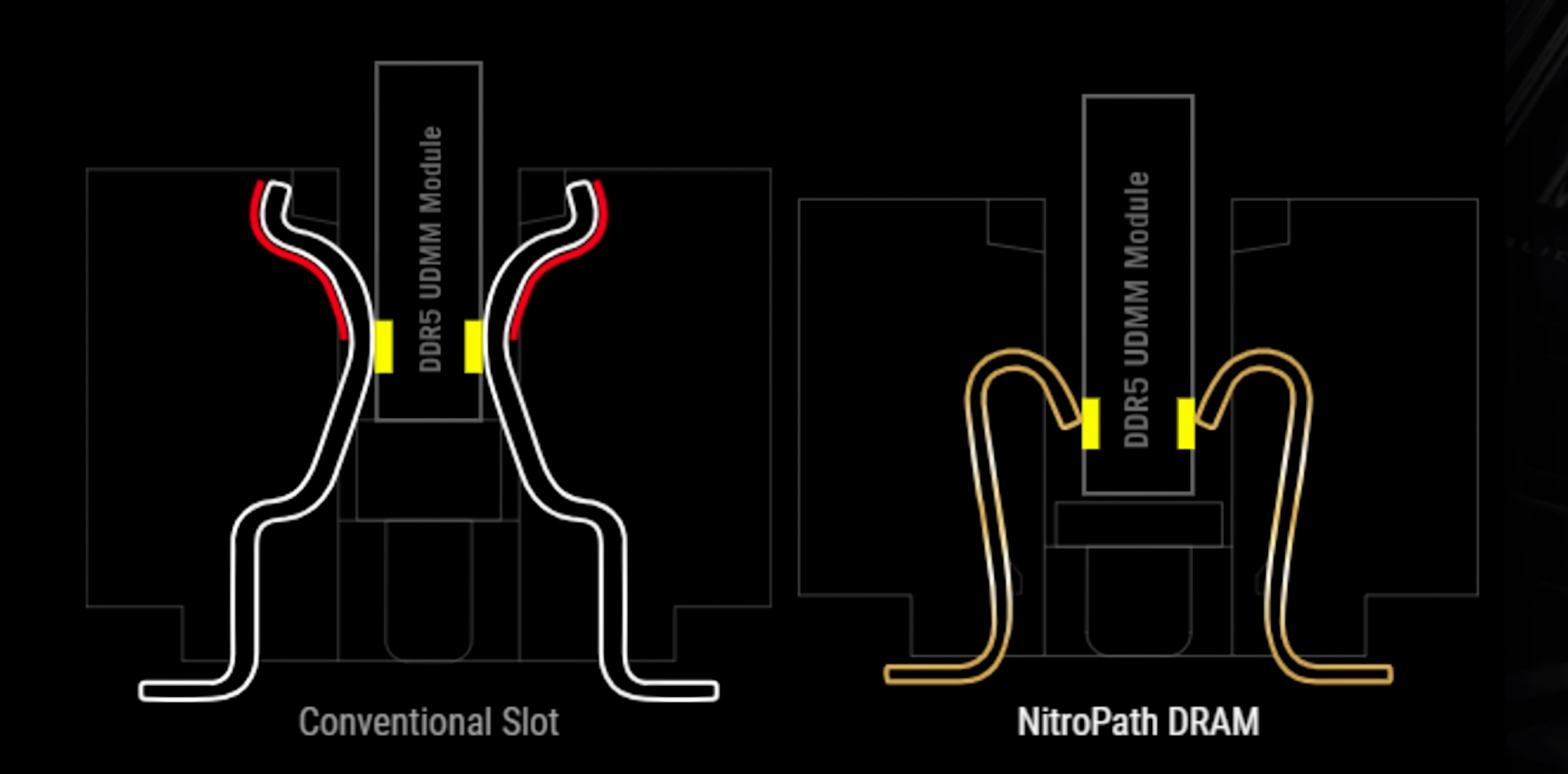Serving tech enthusiasts for over 25 years.
TechSpot means tech analysis and advice you can trust.
The big picture: It's been an exciting year for memory technology thanks to emerging innovations like CAMM2 and NitroPath. The latter is particularly enticing for enthusiasts interested in running high-speed memory and as overclocking specialist Der8auer recently highlighted, it's more than just marketing.
Asus announced its NitroPath DRAM technology during Gamescom back in August. NitroPath is a rethink of the traditional memory slot design that uses shorter gold finger pins and optimized pathways on the motherboard to increase overclocking headroom by up to 400 MT/s.
Asus also claims its redesigned memory slots enhance retention force by 57 percent, which can help against wear-and-tear among those that frequently swap out memory. The most interesting part, however, is without a doubt the new contact pin design.

Conventional RAM slots use contact pins that look like what you see on the left, with branches that point up and out like an antenna. The redesigned contact pins are shorter and bend downward. As Der8auer explains, the contact design comes into play when running two sticks of high-speed memory on boards with four slots.
The two unoccupied memory slots are still electrically connected to the CPU and at high speeds, each pin acts as an antenna and can interfere with the signal quality of the adjacent, occupied slot. Shortening the pins and bending them down instead of up reduces this interference, we're told.

Asus demonstrated NitroPath for Der8auer using two platforms: one X870-A board used conventional RAM slots while the other leveraged the new contact technology. With an AMD 8700G CPU, they were able to max out at 8,200 MT/s – stable enough to boot into Windows but not solid enough to run MemTest86. The team then moved the CPU and memory to the NitroPath board and hit 8,600 MT/s fully stable.
In short, you will likely only find the tech on four-slot boards as it is more about the empty slots than the occupied ones. As such, it won't provide much of a benefit on two-slot boards.




:quality(85):upscale()/2024/10/29/625/n/1922564/ec222ac66720ea653c5af3.84880814_.jpg)
:quality(85):upscale()/2021/07/06/971/n/1922153/7d765d9b60e4d6de38e888.19462749_.png)
:quality(85):upscale()/2024/10/29/957/n/1922441/c62aba6367215ab0493352.74567072_.jpg)

:quality(85):upscale()/2024/10/29/987/n/49351082/3e0e51c1672164bfe300c1.01385001_.jpg)
 English (US) ·
English (US) ·